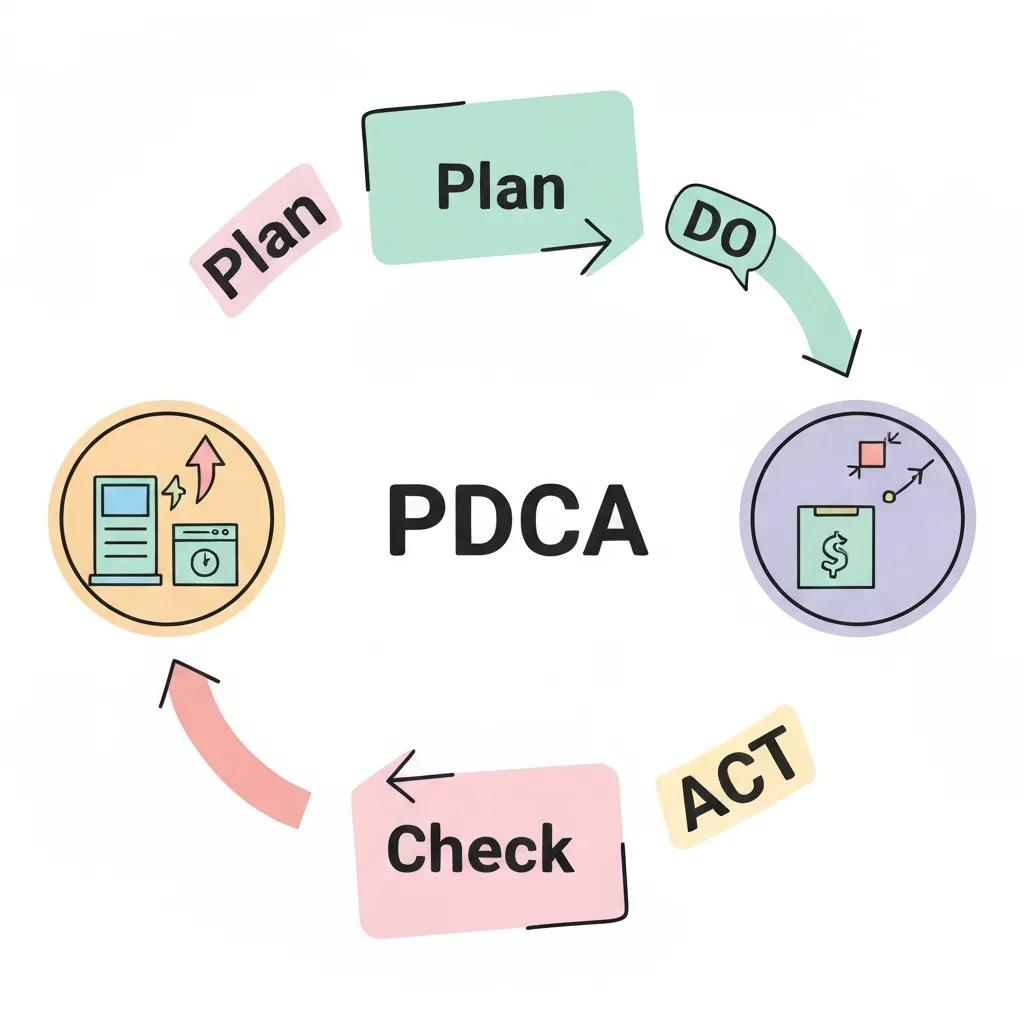Discover Proven Stakeholder Feedback Mechanisms for Success

Effective Stakeholder Feedback Mechanisms for ISO 9001 Success
Effective stakeholder feedback mechanisms drive project success by aligning quality management systems with real‐world needs. With 85 percent of project managers ranking stakeholder engagement as critical to on‐time delivery, organisations that integrate systematic feedback not only meet ISO 9001 requirements but also gain competitive advantage and client trust. This guide maps out essential definitions, best practices, integration steps, certification alignment, real‐world case studies and emerging trends in stakeholder feedback to help IT directors and business leaders embed robust processes. Key themes include:
- Defining stakeholder feedback and its benefits for ISO 9001
- ISO 9001 requirements for interested parties and feedback integration
- Practical methods for collecting, analysing and acting on input
- Continuous improvement loops and PDCA alignment
- Certification support, audit readiness and business impact
- Case studies and future directions in real‐time engagement
What Is Stakeholder Feedback and Why Is It Crucial for ISO 9001 and Quality Management?
Stakeholder feedback is structured input from any individual, group or organisation affected by project outcomes, and it underpins ISO 9001’s mandate to understand and meet interested party requirements. By systematically collecting and analysing input, organisations improve process reliability and customer satisfaction while demonstrating compliance evidence for certification audits.
How Do We Define Stakeholder Feedback in the Context of ISO 9001?
Stakeholder feedback comprises documented comments, suggestions and evaluations provided by customers, suppliers, regulators or employees, designed to reveal needs and drive quality improvements. This process connects stakeholder expectations to QMS objectives, enabling managers to prioritise requirements and close gaps before they impact performance and compliance.
Continued clarity on this definition leads into the strategic benefits of engagement across the organisation.
Why Is Effective Stakeholder Engagement Vital for Organisational Performance?
Effective engagement fosters trust, builds credibility and mitigates risk by revealing hidden requirements and potential nonconformities early. Organisations that prioritise two‐way communication with suppliers and clients report a 20 percent reduction in project rework and a 15 percent improvement in delivery times, reinforcing overall performance.
The Importance of Stakeholder Engagement in Project Success - in English
Research indicates that effective stakeholder engagement is critical for project success, with organisations reporting significant improvements in project delivery times and a reduction in rework when prioritising two-way communication with stakeholders. This highlights the importance of stakeholder feedback mechanisms in achieving project goals and meeting quality management system objectives.
Project Management Institute, “A Guide to the Project Management Body of Knowledge (PMBOK® Guide)” (Various Editions)
This source supports the article’s emphasis on the importance of stakeholder engagement for project success.
Insight into these benefits prepares the discussion of specific feedback mechanism advantages.
What Are the Key Benefits of Robust Stakeholder Feedback Mechanisms?

Organisations reap multiple rewards when they implement structured stakeholder feedback:
- Enhanced Process Efficiency – Early input reduces corrective actions and streamlines workflows.
- Increased Client Satisfaction – Responsive adjustments to products and services build loyalty.
- Continuous Improvement – Real‐time data fuels PDCA cycles and innovation.
These benefits illustrate why strong feedback loops serve as the backbone of an ISO 9001-based QMS and set the stage for defining standard requirements.
How Does ISO 9001 Define Interested Parties and Their Feedback Requirements?
ISO 9001 requires organisations to identify all interested parties whose needs can influence or be influenced by the QMS, and to establish monitoring processes for their requirements, including feedback channels. This ensures that the system remains adaptive and evidence of stakeholder satisfaction is maintained.
What Are ISO 9001 Requirements for Identifying and Engaging Interested Parties?
ISO 9001 mandates a documented process for recognising customers, regulators, employees and suppliers and understanding their requirements to ensure statutory and customer needs are met. Organisations can extend this approach by reviewing ISO 21001 stakeholder engagement principles for educational organisations to inform broader strategies.¹
Building on identification methods, the next requirement focuses on feedback collection and monitoring.
How Does ISO 9001 Mandate Feedback Collection and Monitoring?
Clause 9.1.2 requires organisations to collect data on customer satisfaction indicators through surveys, interviews and complaint handling, while Clause 4.2 demands control of documented information on stakeholder communications. These mechanisms generate actionable insights and formal records for audit trails.
ISO 9001 and Customer Satisfaction - in English
ISO 9001 standards require organisations to monitor customer satisfaction and collect data through various channels, such as surveys and complaint handling, to ensure the quality management system remains adaptive and responsive to stakeholder needs. This aligns with the article’s discussion of how ISO 9001 mandates feedback collection and monitoring.
International Organization for Standardization, ISO 9001:2015 Quality management systems — Requirements (2015)
This citation supports the article’s discussion of ISO 9001 requirements for feedback collection and monitoring.
| Clause | Feedback Activity | Evidence Required |
|---|---|---|
| 4.2 | Documented stakeholder records | List of stakeholder groups and their needs |
| 9.1.2 | Customer satisfaction monitoring | Survey results and corrective action logs |
| 10.3 | Corrective actions & lessons learned | Root cause analyses and improvement plans |
Mapping clauses to activities clarifies compliance steps and leads into how feedback feeds into the QMS itself.
How Is Stakeholder Feedback Integrated into the Quality Management System (QMS)?
Stakeholder input becomes part of management reviews, process performance metrics and risk assessments, ensuring feedback drives policy updates, procedure changes and resource allocations. Embedding this data in QMS workflows demonstrates continual improvement.
What Documentation and Records Are Needed for ISO 9001 Compliance?
Effective documentation under ISO 9001 requires:
| Record Type | Description | ISO Requirement |
|---|---|---|
| Stakeholder register | List of identified parties and their interests | Clause 4.2 |
| Satisfaction survey reports | Results and analysis of feedback collected | Clause 9.1.2 |
| Management review minutes | Decisions and actions based on feedback | Clause 9.3 |
| Corrective action records | Reports on nonconformities and resolutions | Clause 10.2 |
Maintaining these records underpins audit readiness and bridges to best practices for gathering high-quality feedback.
What Are the Best Practices for Collecting Stakeholder Feedback Effectively?
Implementing best practices ensures feedback is relevant, timely and actionable, strengthening QMS outcomes and supporting ISO 9001 certification evidence.
Which Methods and Channels Are Most Effective for Stakeholder Feedback?
- Online surveys with targeted questions for customer satisfaction metrics.
- Structured interviews and focus groups for in-depth insight.
- Workshops and co-creation sessions with key suppliers.
- Digital suggestion boxes and feedback portals for continuous input.
How Do You Design Effective Feedback Questions for Accurate Data?
- Use open-ended questions to explore emerging issues.
- Include rating scales for quantitative benchmarking.
- Apply neutral wording to avoid bias.
- Pilot test instruments to refine clarity and relevance.
How Can Organisations Ensure Data Quality and Confidentiality in Feedback?
- Implement secure digital platforms with encryption.
- Anonymise responses where appropriate to encourage candour.
- Define access controls for sensitive information.
- Validate data through cross-checks and audit trails.
What Digital Tools Facilitate Agile and Continuous Feedback Collection?
| Tool | Feature | Benefit |
|---|---|---|
| SurveyMonkey | Customisable survey templates | Quick deployment and detailed analytics |
| Microsoft Teams | Integrated polls and chat feedback | Real‐time collaboration and logging |
| Qualtrics | Advanced analytics and dashboards | Insightful trend analysis |
| Slack | Instant feedback via channels and bots | Informal continuous dialogue |
Selecting agile platforms accelerates feedback loops and feeds into PDCA cycles for ongoing improvement.
How Can Organisations Implement and Manage Stakeholder Feedback Loops for Continuous Improvement?
A structured feedback loop transforms raw input into strategic action and measurable quality gains, reinforcing ISO 9001’s focus on continual improvement.
What Are the Steps to Establish an Effective Stakeholder Feedback Loop?
- Define stakeholder groups and communication objectives.
- Collect feedback through chosen methods and channels.
- Analyse data to identify trends, risks and improvement opportunities.
- Implement corrective or preventive actions within QMS processes.
- Review outcomes and refine the loop for higher effectiveness.
How Is Feedback Integrated into Decision-Making and Quality Management Reviews?
During management reviews, feedback data informs strategic decisions on resource allocation, policy updates and risk mitigation plans. Embedding stakeholder metrics as KPIs demonstrates leadership commitment to customer‐centric quality management.
Continuity between reviews leads to adopting formal improvement frameworks like PDCA.
How Does the PDCA Cycle Support Continuous Improvement Through Feedback?

- Plan: Set objectives based on input.
- Do: Execute changes.
- Check: Measure effects via stakeholder satisfaction.
- Act: Standardise successful practices.
What Are Common Challenges in Feedback Loop Management and How to Overcome Them?
- Challenge: Low response rates → Solution: Simplify channels and send targeted reminders.
- Challenge: Data overload → Solution: Prioritise metrics aligned with strategic goals.
- Challenge: Inadequate action on results → Solution: Assign ownership and track progress in management reviews.
Addressing these obstacles maintains loop momentum and strengthens QMS credibility.
How Does Robust Stakeholder Feedback Support Achieving and Maintaining ISO 9001 Certification?
Linking feedback mechanisms directly to certification criteria provides tangible audit evidence and drives continual enhancement of the QMS.
How Do Feedback Mechanisms Map to ISO 9001 Certification Requirements?
| ISO Clause | Feedback Activity | Evidence for Audit |
|---|---|---|
| 4.2 | Documented identification process | Stakeholder register and analysis report |
| 9.1.2 | Satisfaction monitoring | Survey dashboards and corrective actions |
| 9.3 | Management review inclusion | Minutes showing stakeholder metrics discussed |
| 10.2 | Corrective and preventive actions | Action plans and follow-up records |
A direct mapping demonstrates how feedback processes satisfy each clause’s intent and evidences QMS effectiveness.
What Are Best Practices for Auditing and Documenting Stakeholder Feedback Processes?
Organisations should:
- Schedule internal audits focused on feedback records.
- Cross-reference records with management review inputs.
- Validate corrective action closures through follow-up surveys.
- Maintain version control on stakeholder documentation.
These steps ensure feedback processes remain transparent and audit-ready.
How Can Feedback-Driven Improvements Enhance Client Satisfaction and Retention?
By acting on input, service offerings evolve to address emerging needs, leading to a reported 18 percent increase in repeat business among ISO 9001-certified organisations. This measurable uplift underscores the commercial value of feedback-driven quality enhancement.
Such performance gains naturally invite examination of real-world success stories.
What Are Real-World Examples and Case Studies of ISO 9001-Compliant Stakeholder Feedback Success?
Organisations across industries have leveraged structured feedback to exceed certification requirements and drive innovation.
How Have Organisations Improved Quality and Innovation Through Stakeholder Feedback?
A manufacturing firm introduced quarterly supplier workshops after feedback revealed material delays, cutting lead times by 25 percent. A software company used in-app surveys to refine features, resulting in a 30 percent reduction in customer-reported issues.
These examples highlight how targeted engagement accelerates continuous improvement.
What Lessons Can Be Learned from Successful ISO 9001 Certification Projects?
- Prioritise stakeholder mapping before designing feedback processes.
- Embed feedback metrics into organisational KPIs.
- Allocate dedicated resources for data analysis and action planning.
Learning from peers ensures a smoother certification journey and more sustainable quality gains.
How Does Stratlane Support Clients in Optimising Stakeholder Feedback for Certification?
Stratlane’s ISO 9001 consulting partners guide organisations through stakeholder identification, process design and audit preparation. By combining expert guidance with proven methodologies, Stratlane helps clients document feedback loops, integrate PDCA practices and achieve certification with robust evidence.
Experience informed strategies provide a solid foundation for future trends in engagement.
What Are the Emerging Trends and Future Directions in Stakeholder Feedback Mechanisms?
As digital transformation advances, feedback systems evolve toward real‐time, data‐driven engagement models that integrate seamlessly with quality management platforms.
How Is Digital Transformation Changing Stakeholder Feedback Collection and Analysis?
Cloud-based platforms and AI analytics automate sentiment analysis and trend detection, reducing manual effort and uncovering deeper insights faster. Integration with CRM and project management tools ensures immediate visibility and action.
Why Is Continuous, Real-Time Feedback Becoming the New Standard?
Continuous feedback replaces periodic surveys by embedding micro-surveys and chatbots within workflows, enabling instant course corrections and driving agile improvements. This model aligns with ISO 9001’s emphasis on continual performance evaluation.
How Will Stakeholder Engagement Impact Project Success and Risk Management in the Future?
Embedding predictive analytics will allow organisations to forecast stakeholder concerns and influence project plans proactively, further reducing risk and enhancing stakeholder confidence. Future systems will link feedback metrics directly to quality dashboards for real-time governance.
Anticipating needs cements stakeholder feedback as a strategic asset in tomorrow’s certified organisations.
Stratlane encourages IT directors and business leaders to embed these best practices into their QMS and explore tailored ISO 9001 consulting to strengthen stakeholder engagement, drive continuous improvement and secure certification success.
¹ ISO 21001 for Educational Organizations – Stratlane